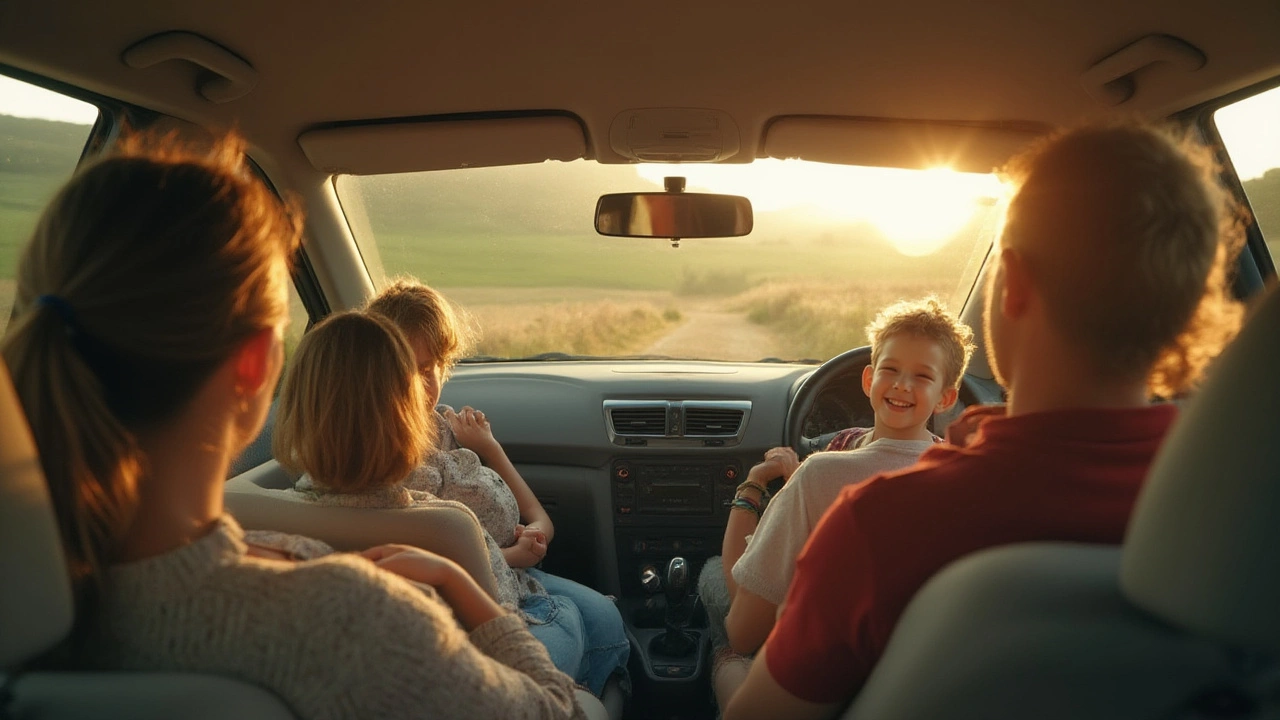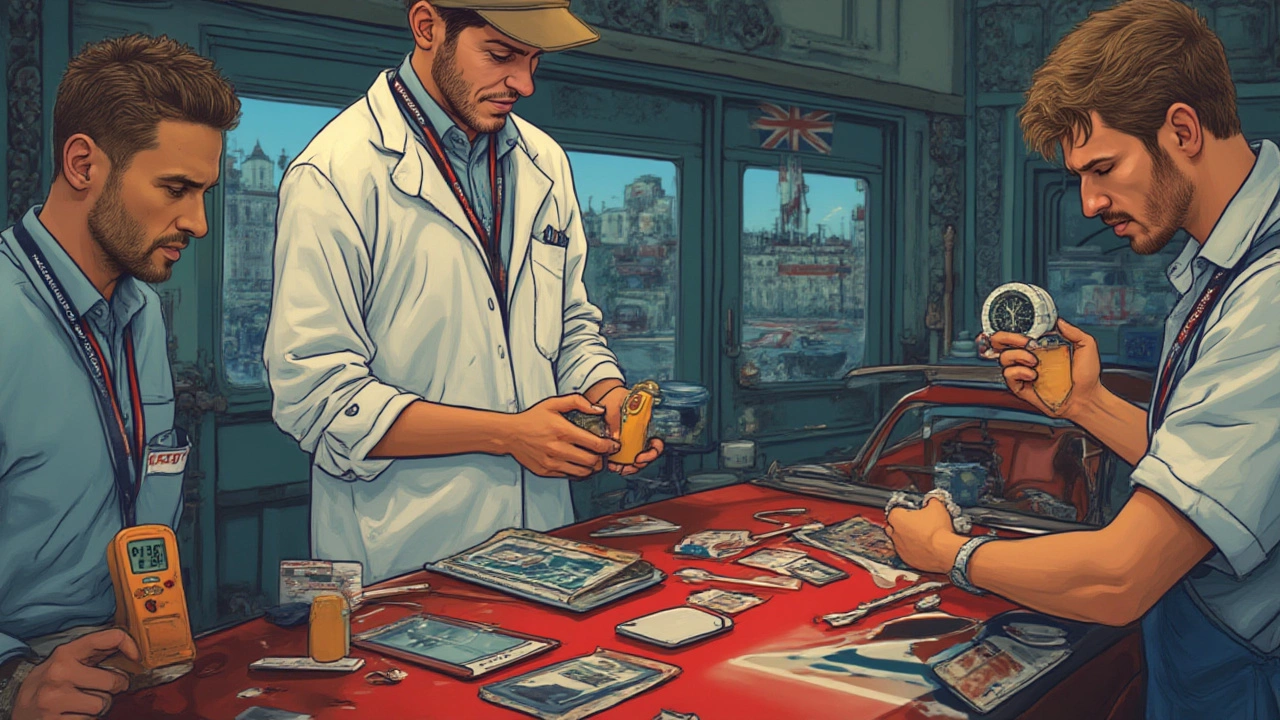Sunburned thighs. Annoying glare on your GPS. Windows that feel like walking into an oven in July. Most drivers know this pain, but surprisingly, the real game-changer for comfort and practicality isn’t some world-changing gadget. It’s a thin, high-tech film called ceramic window tint. But does ceramic tint actually make a difference, or is it just another expensive car trend that looks cool on Instagram?
What Makes Ceramic Tint Different from Regular Tints?
If you’ve ever tried peeling yourself off a vinyl seat in the summer or squinted your way through a low sun, you know that regular window tint can help, but only to a point. Traditional tints, usually dyed or metallized, work mostly by making your windows darker. That means a bit less light, slightly less heat, a hint more privacy—but they can only go so far before visibility takes a hit, or you end up with windows that look like a limo all day and night.
So, what’s the deal with ceramic tint? Here’s the science: Ceramic tint is made with non-metallic, non-conductive ceramic particles. Unlike the dyed stuff, these particles don’t fade over time. Unlike metallized films, they don’t mess with phone signals, Bluetooth, or GPS. Instead, they work by blocking more heat and light at the molecular level—think microscopic sunblock, but for glass.
What really sets ceramic tint apart is its ability to block infrared rays, which are the main cause of heat buildup inside your car. According to well-documented lab tests by manufacturers like 3M and Llumar, quality ceramic tints can block up to 96% of infrared heat. Even their mid-range versions push well above 80% effectiveness. For comparison, regular dyed tints typically block only 30–50% of infrared. That can mean a 30°F difference in interior temperature on a blazing day—no joke. Ceramic films also filter out 99% of harmful ultraviolet (UV) rays, the ones that age your skin and fade your seats. Dyed tints rarely beat 60% on this metric.
Here’s a quick table that puts some of these stats side by side:
| Tint Type | Average IR Heat Blocked | UV Blocked | Signal Interference | Visible Darkness |
|---|---|---|---|---|
| Ceramic | 80–96% | 99% | None | Light to dark options |
| Dyed | 30–50% | 40–60% | None | Light to dark options |
| Metallized | 50–70% | 80–90% | Yes* | Light to dark options |
*Metallized films can mess with radio, cell, and even toll tag signals—one of those annoying details you don’t notice until you’re missing a call or your navigation flakes out halfway into a road trip.
While we’re at it, let’s clear up one myth: ceramic tint doesn’t have to look dark. You can get tints that are high-tech clear, blocking most heat and UV without making your windows much darker than stock. It’s privacy without the cop-stopping limo look, if that’s your vibe.
The big question—does this justify the price? Ceramic tints usually cost 2-3 times more than dyed or basic tints. Installers will quote you anywhere from $400 to $900 for a sedan, depending on the brand and region (metro areas charge more). For a budget tint, you’re looking at $150–$250. It’s a classic tradeoff: upfront cost versus long-term comfort, heat reduction, and interior protection.

Real-World Benefits You Actually Feel
The fancy stats are nice, but what can you feel day to day? Here’s what makes ceramic tint more than just a spec-sheet winner—this stuff actually changes life on the road.
First, picture tackling a midday grocery run. Without ceramic tint, the inside of your car is a miserable heat trap, especially if you park in an open lot. After even 30 minutes in the sun, dashboard surfaces can hit 160°F. Put ceramic tint on those windows and you’re stepping into a car that’s, on average, 15–20°F cooler, with hot spots sometimes 30°F lower. The difference is so clear that some folks end up not bothering with windshield sunshades anymore. If you do use a shade, combine it with ceramic tint and you’ll almost feel like you have air conditioning running on low, even when parked.
It’s not just about comfort. Repeated sun exposure wrecks a car’s interior—cracked plastic, faded seats, dry-rotted dashboards. By blocking up to 99% of UV, ceramic tint slows down that aging, which can help your car’s resale value and cut down on pricey repairs. A study from the Skin Cancer Foundation showed that drivers in the U.S. get more sun damage on the left side of their faces—because regular glass only blocks some UVA rays. You don’t just lower the risk of sunburn; you really protect your health.
Then there’s the driving comfort. Ever had to fight sun glare on your phone or dash screen while driving west at sunset? Ceramic tint keeps your cabin less blinding and your screens easier to read without losing clarity. This kind of filter is especially obvious for people with sensitive eyes or migraines triggered by light. And since ceramic tint doesn’t rely on dark coloring, you keep great night clarity. Older or cheap tints can make reversing or night driving a dicey guessing game, but ceramic films shine when it comes to safe, all-hours visibility.
Privacy is another perk. Lighter ceramic tints look stock but offer just a bit more “what’s in that car?” to prying eyes. Want your commute free from gawkers in traffic or nosy parking lot window shoppers? Pick a darker tint for the back windows. Legally, most states let you use lighter ceramic up front and darker in the back—just check your local tint laws to avoid fines. Fun stat: since 2022, ceramic tints have become factory options on several luxury models, like some Teslas and BMWs, not just aftermarket upgrades.
Ceramic is easy on tech. Modern cars are loaded with antennas and sensors; metallized film can seriously mess with your navigation, Bluetooth, and those automated toll sensors. Ceramic lets signals pass through, so everything works as intended. This tech-friendliness is actually a must-have for EVs and plug-in hybrids, where everything’s connected inside that glass bubble.
Some extra tips if you’re considering ceramic tint:
- Always get professional installation. Cheap DIY kits never fit right, peel fast, and rarely use true ceramic film. The difference is visible for years—bubbles and purple tint are pure amateur hour.
- Check your local laws. Most U.S. states allow some degree of front window tint, but the allowed “visible light transmission” (VLT) varies. Fines are a hassle, and cops have a gadget that tests your tint’s legality on the spot.
- Ask for proof. Real ceramic films come with a manufacturer’s warranty (often lifetime). See the box or check the receipt. If it’s not certified, it’s probably just a fancy dyed film with a high price tag.
- Don’t skip the windshield. Some installers offer a nearly clear ceramic strip along the top of the windshield—this blocks a ton of heat right where the sun is strongest, and it’s usually within the legal gray area for tints.
- If you’re on the fence about cost, start with the sunniest sides of the car. Even one or two windows done in ceramic makes a big difference in how cool the cabin feels after a long day parked outside.
And if tech details get you obsessed, some shops have heat lamps or UV sensors so you can physically feel the difference before you buy. Ask for a demo—it’s oddly satisfying running your hand between a plain window and one covered with ceramic tint. Zero marketing fluff. Just real, touchable evidence.

Are There Downsides or Risks with Ceramic Tint?
No car gear is perfect. With ceramic tint, there are a few things to watch out for—nothing dramatic, but you should be aware before dropping big money.
First, the obvious: price. Premium ceramic tint isn’t cheap. We’re talking $400–$900 depending on car size, number of windows, and the fancy meter reading you want. For the tight-budget crowd, that might really sting. Is it worth it if you only drive short distances or have underground parking? Maybe not. If your car mostly lives in the sun, though, the cost can pay back in saved upholstery, less sweat, and maybe even less cranking of the AC system, which helps with gas mileage and battery range (yep, that’s a factor with electric cars).
Not all ceramic tints are equal. Some manufacturers cut corners, calling a hybrid film “ceramic” when it only contains a sprinkling of those special particles. Stick with brands that install a lot of these films and offer a written warranty. If a shop’s reviews are sketchy or their quote seems too good to be true, be suspicious. The real stuff feels cool to the touch even in hot sun, fades almost never, and stays clear for years. Cheap imitations fade, haze up, or even turn purple like the cheapest dyed stuff.
What about glass breakage or tint removal? If you ever have to take the tint off, true ceramic film is easier to remove without the gluey mess of dyed films, but it can still leave a bit of residue. Always have pros do the work—your fingernails and razor blades will just scratch the glass or cause stress cracks. This is especially true on fancy glass like Tesla Model 3 roofs or the curved “bubble” windows of hatchbacks.
A rare, but not impossible, risk is moisture after installation. Tints are installed wet and pressed into place, so you sometimes see bubble-like streaks for the first week (even ceramic). These usually vanish as it dries. Don’t panic or peel anything in week one.
The last thing is about looking too dark. Because ceramic tints block so much heat without being darker, many drivers make the mistake of going with a super dark look. If you do this just for style, you might hate nighttime driving—especially reversing or navigating dark, rainy streets. If you need security from prying eyes, darken only the rear or side windows, and keep your driver/passenger glass legal and light.
Ceramic tint is honestly one of those upgrades you appreciate more every day you drive, even if you forget about it after a month or two. As a bonus, if you go to car meets, it’s an instant mark of someone who cares about their ride and actually uses smart stuff—not just bolt-on spoilers and LED light strips. Flash, my goldfish, might not care (he hates road trips), but I’ve never regretted investing in a little more comfort and a lot less sizzle when it’s 95° with the sun baking the dash.